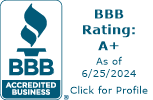Pass the Skewer and Dangle the Dog
Jerry and Ramona wanted me to come over and enjoy their fire pit this summer. They like to roast marshmallows for s’mores, but this didn't appeal to me since I don’t eat sugar. I called her up recently and suggested we roast hotdogs on their fire pit. She was thrilled.
Preparing for the Fire Pit
I cooked some fabulous “hotdog” chili, as we called it in the South, made coleslaw, bought my favorite hotdogs and buns, and headed over for an evening of outdoor roasting. Their friend Bill came as well. The guys headed to the fire pit and got a nice fire blazing.
Ramona and I joined them with a tray of dogs to roast. Ramona ran back into the kitchen to grab the skewers. When she reappeared on the scene, I burst out laughing.
The Skewer Situation
“Ramona, those are your skewers?” I exclaimed, looking at tiny metal 10” skewers. “Is this what you normally use?”
“We’ve never roasted hotdogs,” she replied.
“What? I thought you had been roasting all summer.”
“Only marshmallows,” she sighed.
“How will we keep from getting our hands burned with such short metal skewers without handles? Oh, my word,” I declared.
Jerry and Bill were laughing, but Ramona didn’t seem to understand the dilemma. Jerry attempted to explain it to her, but it really didn’t sink in at first.
Making the Best of It
Always wanting to make the best of a situation, I speared a dog and tried to hold it over the hot coals. I couldn’t get it close enough to cook it. Jerry excused himself to find an alternative. Meanwhile, I looked over and saw Bill was dangling his dog vertically over the coals. I followed suit. Ramona returned, and now she began laughing.
Jerry, a fine woodworker of furniture, rejoined us with narrow pieces of wood about 20” long. His idea was to thread the wood through the eye of the skewer to lengthen the skewer. Bill and Jerry managed to do that, but every time I tried, the skewers with the hotdog rotated upside down. I’m having difficulty painting the ludicrous picture of what was happening. I was laughing so hard. Ultimately, I dangled my hotdog vertically and got a bit of a char on it.
We decided to head indoors to eat.
Chili Slaw Dawg or Nekkid Dawg?
“Ramona, are you having a chili slaw dawg or a nekkid dawg?” I asked with a smirk.
“What in the world are you talking about?” she inquired.
In the little town of Lincolnton, North Carolina, there is a famous cafe on the square across from the Lincoln County Courthouse called City Lunch. They serve good ole country cookin', including hotdogs. I’ve been told they sometimes sell upwards of 10,000 hotdogs in a day when supplying a fair or rally. When you order your hotdog, it comes with mustard, onions, chili, and slaw. If you want none of that, you order a naked (nekkid) dog. It’s a family tradition to order these chili slaw dogs whenever I'm in town.
The Legend of Lynette Greer
They only take cash, and they don’t have an ATM. A reputable source told me that the late owner, a delightful and friendly woman, Lynette Greer, took the cash home each night. By her death, she had a million dollars in cash in “safe” keeping. Urban legend? I don’t know.
I hope she had a tall security fence, a burglar system, and a fireproof safe for all her money! Though she dressed simply and didn’t wear makeup, she was a smart, savvy woman and always had a smile for you. She made a fortune selling her hotdogs—the diner still serves up an average of 700 a day, and they fry chicken the old-fashioned way in a cast iron skillet every Thursday.
Protecting What Matters
What do you need to protect from the outside world? Hopefully, you aren’t keeping a million dollars of cash in your house! However, I hope you have a million dollars if that’s your dream. Fences will keep your children and your dogs in and keep the deer and foxes out.
Call Terry today! She’s waiting to hear from you!
All my best regards,
Debbie Page
CEO, Louis E. Page Inc – Woman-owned business and Family-owned since 1893. (So 131 years ago our family ancestor Louis E. founded the company!)










